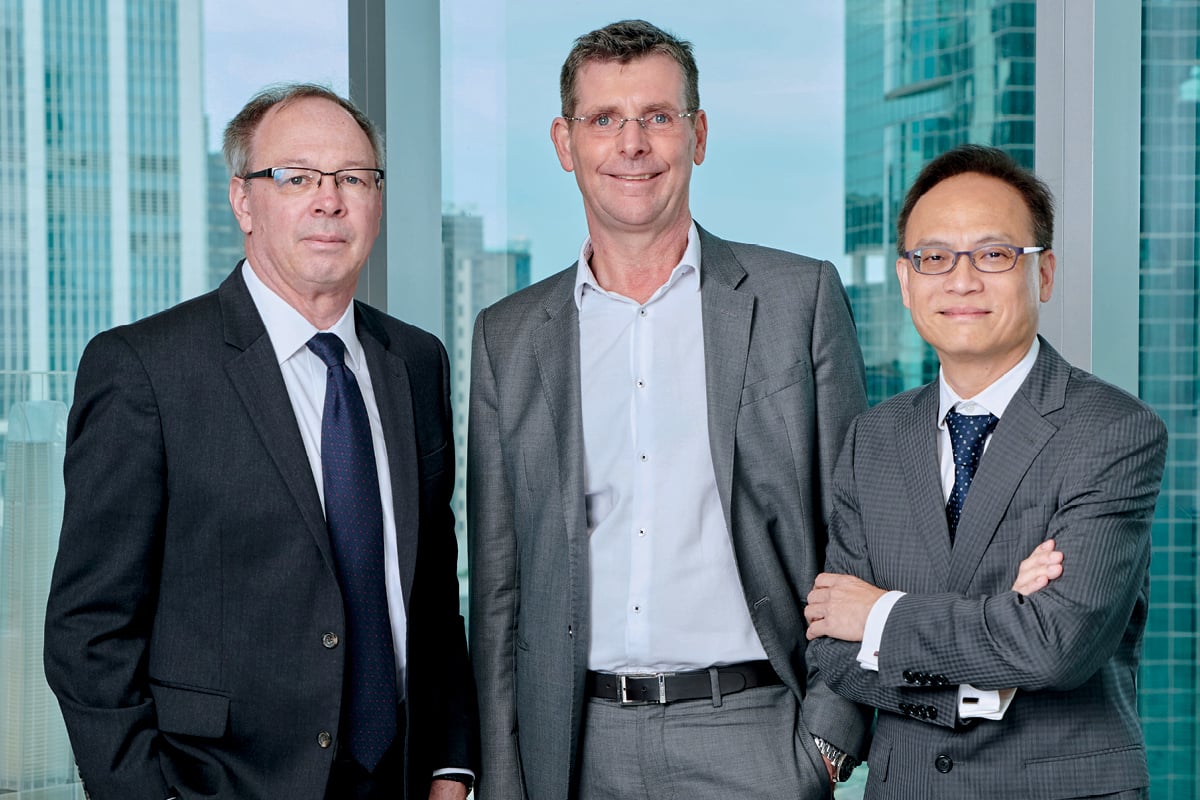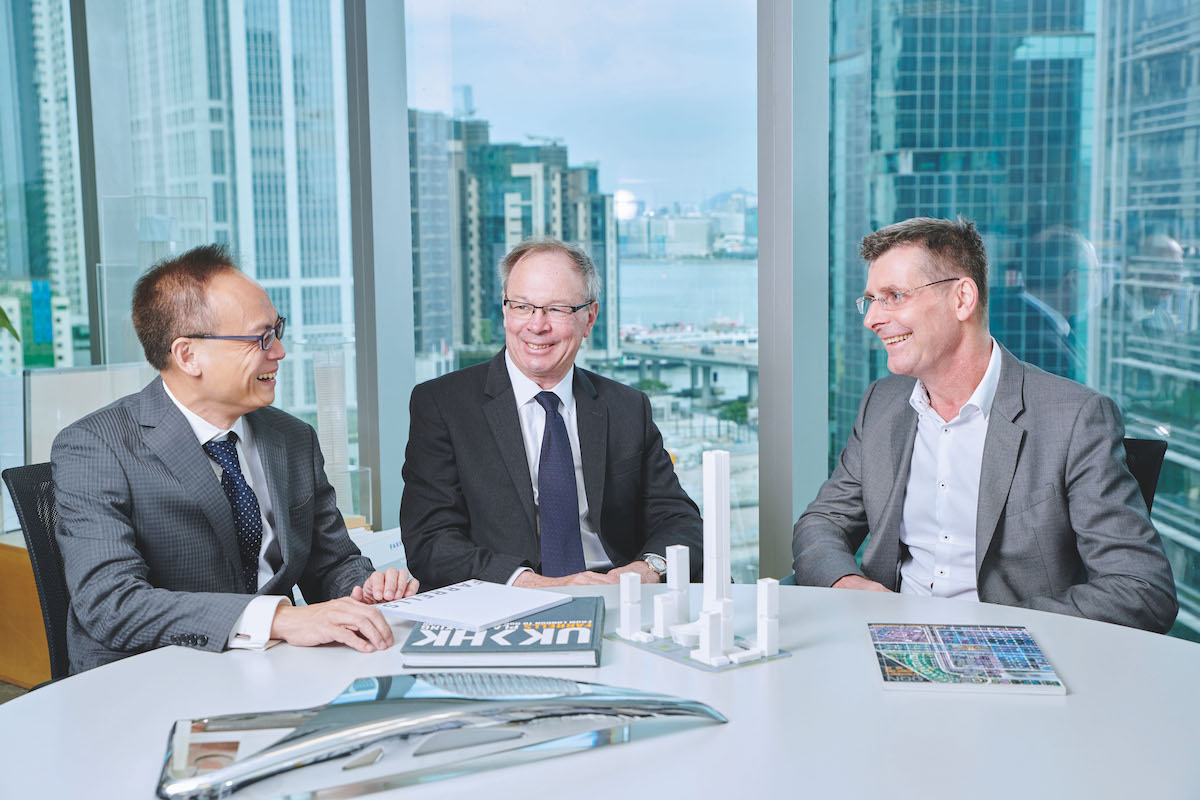“We aspire to create special buildings.”: Gavin Erasmus, Stefan Krummeck & Felix Li
Internationally recognised architecture firm Farrells Hong Kong does more than design significant places – it designs significant places that work. The CEO Magazine speaks to its directors Gavin Erasmus, Stefan Krummeck and Felix Li.
According to well-known American football broadcaster and coach Jimmy Johnson, "The difference between ordinary and extraordinary is just that little ‘extra’." Farrells Hong Kong has been delivering the extraordinary since 1991.

Transforming the city’s urban fabric for nearly 30 years now, the award-winning architecture firm is the mastermind behind many of the city’s most iconic structures, including The Peak Tower, the urban district and transportation hub of West Kowloon and the Kennedy Town station and swimming pool.
Its current project, the prestigious M+, Hong Kong’s most anticipated visual culture museum, is set to rival global stunners like MoMA in Manhattan and the Tate Modern in London.
A three-way joint venture with the renowned Herzog & de Meuron architects and the firm’s long-term international engineering partners, Arup, will deliver the design for all of the elements of the building to its completion.
"The project is very iconic and innovative," says Farrells’ Director Gavin Erasmus. "It involves many interesting architectural and engineering approaches because it is being built on top of running railway tunnels. The ceramic, precast facades are also unique. There are many aspects of it that make it very special, and we are all very proud to have been part of it."
Up against a number of talented and well-versed architects and design firms, Farrells still managed to win the project. More than luck, the design firm has a solid streak of success. "Many, many of our projects get built," shares Director Stefan Krummeck confidently. "We’re not paper architects. We manage to realise many of our projects."
So, what makes Farrells different? For one, the Farrells’ legacy dates back to 1965 in London. The firm was founded by Sir Terry Farrell, a British architect and true maverick of his time. When demolition and redevelopment were on trend, he veered left and focused on reimagining what already existed. It’s something that feeds into the company’s approach to this day.
"We have a strong philosophy of ensuring that what we build is in tune with the culture and context of its location," says Gavin. "It’s about understanding what’s relevant to the place. It’s a multidimensional aspect of culture, and it stems from this internal philosophy we have as a company of a bottom-up process, starting with the people and place and then designing a solution.

"We’re able to look at the big picture, all the way down through all the stages into the detail. It’s a philosophy that’s as relevant today as it was when the firm was established."
With a strong presence in London, Manchester, Hong Kong and Shanghai and a future expansion set for Australia, whatever the firm is doing is working. Creating something as iconic and memorable as the MI6 headquarters in London, The Deep aquarium in Hull, UK, or the KK100 tower in Shenzhen, China, among many others, takes something special.
Like innovation – Farrells relies on cutting-edge technology to stay ahead of the competition. When it came to the Building Information Model, or BIM, these urban-design specialists were ahead of the game, implementing the new technology years before the government required it.
"Mastering new, innovative technologies will only improve our design skills. It won’t limit them," explains Director Felix Li. "Staying on top of technology puts us at an advantage against our competitors."
"Staying on top of technology puts us at an advantage against our competitors."– Felix Li
Farrells’ limitless creativity is definitely impressive. But, even more, what nudges this firm from ordinary to the extraordinary is that intrinsic little ‘extra’. The people here don’t just create memorable masterpieces – they make masterpieces that work.
"We aspire to create special buildings. A lot of our buildings are recognised as landmarks," shares Stefan. "But what differentiates us is, on one hand, those landmarks are contextual and respond to their surroundings. On the other hand, we also believe in creating landmarks that are functional and satisfy the clients’ needs.
"We don’t do buildings that are only wistful. We try to design special buildings that follow fairly rigid pragmatics and become very iconic through their silhouettes or integration with the groundscape."
"Architecture that works is important too, isn’t it?" chimes Gavin. Indeed, it is. And therein lies Farrells’ secret to success – a beautiful harmony of memorable form and sensible function crafted with extraordinary effort.
Proudly supported by: